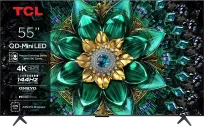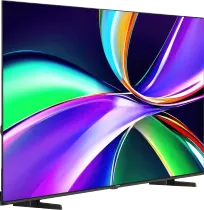
Samsung brought to Barcelona not only a stand but also a concrete vision for the future of cinema halls. At the CineEurope 2025 trade fair, the company officially presented the new version of Onyx Cinema LED – a cinema screen that shines by itself instead of using light from a projector. It's not entirely new, but only now does the solution have a chance to become more widely accepted in Europe. The question is no longer “does it work,” but rather: “will it catch on?”
Glowing wall vs classic projector – where's the difference?
Onyx Cinema LED offers maximum brightness up to 300 nits, while a typical cinema projector operates at a level of 50-100 nits of reflected light. The difference is colossal – especially with daytime scenes, special effects, or HDR content (which let's agree in the world of projectors doesn't make much sense). Moreover, the LED screen also provides a much deeper black.
But it's not that projectors are going out of style. They have their advantages: they are primarily cheaper. Onyx, on the other hand, focuses on sharpness, contrast, and readiness to display 4K at 120 frames per second. This may come in handy in the future, but today most films are still made at 24 fps.
HDR in cinema?
The most interesting argument from Samsung is HDR. Thanks to higher brightness, the screen can display content with a greater tonal range – bright elements are not washed out, and dark ones do not blend into grey. Until now, most cinemas have not had the technology capable of showing HDR in all its glory. Now, that could change. But it only works if the film has actually been created with HDR in mind – and there aren't too many of those yet, at least not until now.
Pixar Disney is betting on Onyx.


As part of the collaboration with Pixar, the Onyx screen has arrived at the studio in California and will be used in the production of films – the first title, "Elio", will debut in 4K HDR on the LED screen. It's hard to get a better recommendation than the fact that the creators of such demanding animations have chosen this technology as their reference!
Technology with potential, but also with limitations
Samsung offers Onyx in four sizes (5, 10, 14, and 20 meters), providing some flexibility in room design.
5 meters ≈ 197 inches
10 meters ≈ 394 inches
14 meters ≈ 551 inches
20 meters ≈ 787 inches
The company also tempts with a 10-year warranty, which can be reassuring in the world of costly investments. However, LED still represents a higher entry threshold, both financially and logistically. Calibration – although less dependent on the light source – is still necessary. And the technology itself may be too "ideal" for some viewers – too much like a television.
How much does such a screen cost?



The Samsung Onyx Cinema LED screen isn't a monolithic slab – it's made up of smaller LED modules that are assembled like blocks into a larger whole. Each of these modules measures about 64 × 89 cm and starts at a price of 3300 dollars – and that's more about bulk orders rather than purchasing a single unit for a living room.
For comparison: a standard 65-inch television (which is about 1.44 metres wide) costs around 1000 dollars. Meanwhile, to create an Onyx screen that is 10 metres wide and in a 21:9 aspect ratio – like in a movie theatre – you need about 80 such modules, which translates to a panel cost of approximately 264,000 dollars. With a 20-metre screen (similar to what you find in IMAX cinemas), the number of modules grows exponentially – we’re talking close to 1,000,000 dollars.
And that's still just the modules. The full kit includes controllers, power supply, housing, mounting system, cooling system, as well as professional installation and calibration. In short: the price reaches a level that could be an investment for commercial cinemas for years, and for the average user – more of a curiosity from the future.
Cinema is changing, but projectors won't be hitting the dump anytime soon
Onyx Cinema LED is undoubtedly a revolution in the world of cinema technology – not only in terms of parameters but also in the philosophy of image display. A glowing screen instead of a projector is a fundamental change. However, as is often the case with revolutions, not every auditorium and not every operator is ready for it.
So, let’s not expect that in the near future in an average Multikino or Cinema City someone will start throwing projectors in the bin. But we can’t completely rule it out – because if the industry decides to move towards "premium experience" and technological advantage, then Onyx could be the direction that changes the rules of the game.
For now, it’s a proposal for the few. But maybe in just a few years – the standard for many.
 Katarzyna Petru
Katarzyna Petru













